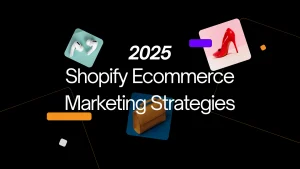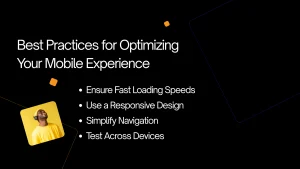2025 Shopify Ecommerce Marketing Strategies: Key Tips and Insights from Webugol

Over the past decade, the e-commerce business has experienced unprecedented growth, and it doesn’t appear to be slowing down anytime soon. Tech advances, customer behavior changes, and worldwide online market expansion have made e-commerce vital to the modern economy. Shopify is one of the many platforms that are helping this expansion happen.
Shopify has great tools for setting up an online store, but the true problem is differentiating among the increasing number of ecommerce businesses. Thoughtful Shopify ecommerce marketing strategies 2025 can make the difference between a successful Shopify store and one that has trouble getting customers.
This post provides an in-depth look at the top Shopify e-commerce marketing strategies for 2025. It includes useful advice and information from Webugol’s Agency team of digital marketing experts. These tips will help your Shopify store succeed in search engines, sales, and brand building.
The E-commerce Landscape in 2025
Ecommerce Marketing Strategies for Shopify Stores in 2025: Shaping the Future of Online Retail
- Mobile commerce is still the most popular type of commerce, thanks to better mobile technology and easier access to the internet. Consumer demand drives businesses to optimize for mobile-first experiences.
- Across several industries, subscription services that offer convenience and exclusivity are becoming more popular. This model guarantees customer loyalty and income with chosen products and periodic delivery.
- AI has improved voice and visual search features, which are transforming the way people find products. Shopping is easier and more interactive with these tools.
- Augmented and virtual reality are changing the way people purchase online. Experience virtual stores, test on stuff, and customize items.
- Social media platforms are increasingly becoming key shopping hubs. Live shopping, buying products in-app, and campaigns led by influencers are some of the things that are making purchases happen directly on social networks.
- Brands must prioritize data protection and transparency to build customer trust and credibility due to stricter regulations and consumer awareness.
Key Challenges for Shopify Store Owners
Shopify store owners will have a lot of chances in 2025, but they will also have to deal with a lot of challenges.
- Marketing must become more strategic as customer acquisition costs rise.
- Increasing competition in crowded markets demands stronger brand differentiation.
- Global companies face inventory and supply chain difficulties.
These problems are tough, but they can be solved. Businesses may succeed with the appropriate tools and Shopify ecommerce marketing strategies 2025.
Shopify Marketing Strategies for 2025
1. Make Your Store Mobile-Friendly for Maximum Impact
More people than ever are shopping on their phones and tablets, which is speeding up the move toward mobile commerce. A smooth mobile experience not only makes customers satisfied, but it can also increase conversion rates and sales.
Mobile Optimization Best Practices
Consider these best practices for mobile shopping:
- Use tools like Google PageSpeed Insights to speed up loading times by optimizing images, decreasing code, etc.
- Choose themes that automatically adjust to screen sizes to make your store seem perfect on any device.
- Create intuitive menus and easy-to-use search functions so that people can easily find what they need.

Staying ahead of mobile shopping trends and following these optimization Shopify ecommerce marketing strategies 2025 can help your business compete in the fast-growing mobile commerce landscape.
2. Use Video Marketing to Increase Engagement and Conversions
Adding video content to your online store can greatly improve the buying experience and increase engagement. Product videos clarify features, benefits, and use cases better than static photos.
Facebook and Instagram are two of the best places for Shopify merchants to use video ads. These brief, engaging adverts draw new customers by creatively showing your products. You can tailor your video ads to certain groups of people, which makes sure that your message will be the most effective.
3. Personalize Customer Experiences Using AI Technology
You can use AI tools to look at your customers’ behavior, tastes, and purchase history when trying to make personalized product recommendations, change prices on the fly, and create unique promotional offers. Instant, context-aware responses from AI-powered chatbots can improve customer service and make shoppers feel valued and understood.
AI can also help you better divide your audience into groups, which lets you run very focused marketing efforts that speak to certain groups of customers. This level of personalization remains one of the ecommerce marketing strategies for Shopify stores in 2025, which boosts consumer satisfaction, loyalty, and repeat purchases.
4. Tap into Social Commerce to Expand Your Reach
Social commerce lets companies attract new customers by integrating shopping into social media. Businesses can easily interact with clients where they already spend a lot of time by using features like in-app purchases, shoppable posts, and collaborations with influencers. This reduces challenges to buying, promotes impulse buying, and allows for more interactive and tailored customer engagement, increasing visibility and sales.
5. Optimize Your Store’s SEO for Better Visibility
SEO is still important for making a Shopify store more visible because it helps your website show up higher on search engine results pages. Customers can simply locate your store when searching for products or services due to enhanced visibility and organic traffic. SEO is among the Shopify ecommerce marketing strategies 2025 that is also cost-effective.
Shopify SEO Optimization Tips
- Dive into Keyword Research
- Craft Click-Worthy Titles and Meta Descriptions
- Speed Up Your Store
- Bring Images to Life with Alt Text
- Create Content That Shines
- Boost Your Credibility with Backlinks
- Go Mobile-First
6. Create a Seamless Shopping Experience Across All Channels
Maintain branding, messaging, and functionality throughout your website, social media, in-store experiences, and third-party platforms for a smooth purchasing experience. Customers can easily switch between channels thanks to unified inventory management and connected payment methods. Cohesion fosters trust, encourages customer engagement, and drives repeat purchases.
Conversion Rate Optimization: Turn Visitors into Customers
To transform visitors into consumers, you need to make sure that the user experience is smooth and really interesting. Start by optimizing your website’s design and navigation for aesthetics and usability. Clear and easy-to-find CTAs can help visitors decide to buy something or take the next step.
Personalization is another critical factor. Make your content, product recommendations, and deals fit the needs of your visitors by paying attention to how they act or what they like. Discounts, free shipping, and limited-time discounts can also convert interest. Lastly, make the checkout process easier by cutting down on the number of stages and giving customers more than one way to pay. These Shopify ecommerce marketing strategies 2025 can help you turn more visitors into satisfied customers.
Automate Your Email Marketing for Better Customer Relationships
Email marketing automation is important for building better relationships with customers because it lets companies communicate with their audience in a timely, personal, and efficient way. Partner with Influencers to Boost Brand Awareness and Sales
Key Recommendations to Automate Email Marketing Effectively
- Segment Your Audience: Sort your email list by behavior, demographics, or purchase history so you can send messages that are relevant and specific to each group.
- Personalize Your Emails: Create personalized, engaging emails by tailoring subject lines, content, and offers using customer data.
- Set Up Triggered Emails: Set up automatic responses for certain activities, like welcoming new subscribers, reminding those who left items in their carts, or following up with people who made a purchase.
- Create Drip Campaigns: Automate emails to guide leads through the buyer’s journey at their own pace.
- Test and Optimize: To make your emails work better and get more people to open them over time, A/B test the subject lines, content, and calls to action on a regular basis.
- Use Analytics: Email analytics, like open and click-through rates, can help you analyze client behavior and improve your approach.
You can make your emails more efficient and build long-lasting, meaningful relationships with your clients by following these ecommerce marketing strategies for Shopify stores in 2025.
Make Data-Driven Decisions Using Shopify Analytics
Shopify has a lot of analytics tools that let you keep an eye on how your store is doing and improve your approach.
Key Metrics to Track:
- Conversion Rates: Find out how well your store is converting visitors into paying consumers.
- Customer Lifetime Value (CLV): Assess the long-term value of your customers.
- Email Open and Click Rates: Figure out which campaigns get the most people involved.
Use tools to take it a step further and figure out how much money you’re really making by including costs like shipping and advertising.
Build Long-Term Customer Loyalty to Drive Repeat Sales
Shopify ecommerce marketing strategies 2025 use loyalty programs to boost client retention and repeat purchases. Word-of-mouth marketing is quite effective, and satisfied consumers often tell their friends and family about their good experiences. Customer loyalty programs also encourage infrequent shoppers to return, increasing sales and revenue regularly.
Subscription Model for Ecommerce
Setting up a subscription-based model is a great method for companies that offer things people need, like beauty products, coffee, or pet supplies, to make money on a regular basis. Store owners benefit from subscriptions’ consistent income flow and convenience for customers who need regular replenishments.
Conclusion
It’s important to add strong Shopify ecommerce marketing strategies 2025 to your store if you want to be competitive today. Use subscriptions to establish recurring revenue and client loyalty. Personalization is another important trend.
For maximum visibility and engagement, mobile-first experiences, SEO best practices, and social media marketing are essential. You can set your store up for long-term success in a fast-paced digital marketplace by staying up to date on these trends and changing with them.
Need help refining your ecommerce strategy? Webugol Agency offers free consultations to enhance Shopify stores. Please share this article so that other Shopify business owners can benefit as well!



